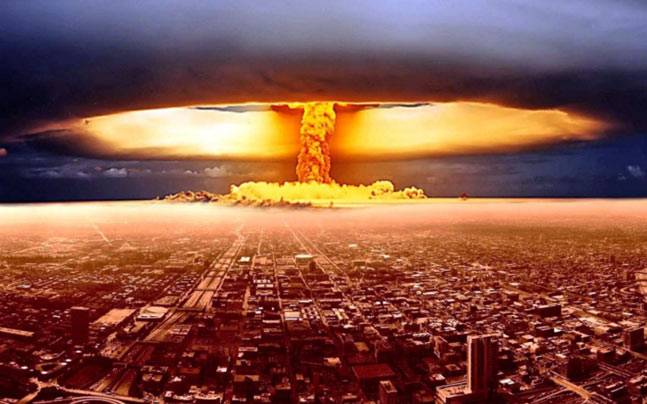The recent publication of the EU Taxonomy on 1 January 2022 envisions substantial investments in nuclear energy to meet the COP26 targets. This decision could result in a recrudescence of anti-nuclear radicalism within the wider Anti-Technology Movement and anti-technology extremism. Yet, while potentially leading to an upsurge in anti-nuclear violence, this is unlikely to gain the necessary momentum to transform anti-technology violence into the next wave of political violence – at least, for the time being.
Following the 2021 United Nations Climate Change Conference (COP26), several governments have started devising plans to reduce emissions and contain the rise in global temperatures by 1.5C. Among the potential pathways to cutting emissions, the European Commission has proposed labelling natural gas and nuclear power as green resources acknowledging that “there is a role for natural gas and nuclear as a means to facilitate the transition towards a predominantly renewable-based future.” These suggestions have sparked widespread controversy among EU countries. Countries like France substantially back this plan. Austria and Germany, instead, have expressed deep concerns regarding potential environmental disasters and the management of nuclear waste. The Commission’s plan also came as Germany shut down its old nuclear power plants.
However, this decision – and its contingent implementation – could likely also stir hostile feelings among insurrectionary anarchists and radical environmentalists. As historical precedents show, these radical milieus are fundamentally opposed to nuclear technologies. Therefore, the likelihood of a recrudescence of anti-technology violence in Europe is increasing. This could potentially result in an increase of violence directed against both nuclear and non-nuclear targets. For the reasons outlined below, it is, however, unlikely to give rise to a wave of anti-technology violence for the time being.
Anti-Nuclear Activism Throughout the Years
If the Commission’s decision ends up fuelling anti-nuclear radicalism, this will nevertheless not be the first time that extremists have focused their efforts on nuclear technologies. Anti-nuclear protests are, in fact, almost as old as nuclear technology. Whether aiming at nuclear disarmament or scrapping civilian programmes, several waves of protests have emerged over the years. Arguably, the mass movements that were the protagonist of the anti-nuclear protests in the 1970s and 1980s in Europe are one of the most notable examples of the widespread malcontent that nuclear technologies have provoked throughout the years. While predominantly non-violent in nature, a few fringes of these movements did occasionally resort to violence. In particular, Germany witnessed frequent clashes and riots, especially after the 1986 Chernobyl disaster. However, these protests did not result in large-scale organised campaigns of violence.
More recently, the 2011 Fukushima disaster gave renewed momentum to anti-nuclear protests and sentiments in several European states. A few months after Fukushima, Italy held a referendum on its nuclear energy programme which had been planned before the disaster. Yet, the events in Japan had an undeniable and profound impact on voters’ decision to scrap the programme. In the shadows of these large, legal movements, however, small, clandestine cells of insurrectionary anarchists were planning a much more radical course of action. In March 2011, a parcel bomb sent to Swissnuclear in Olten (Switzerland) injured two women for which an Informal Anarchist Federation (FAI) cell claimed responsibility. The attackers – who had links with the eco-anarchist group Il Silvestre – carried out this attack in solidarity with a few imprisoned comrades, but the choice of target is striking considering the close temporal proximity to Fukushima. In May 2012, then, the FAI cell ‘Olga Nucleus’ kneecapped Roberto Adinolfi – CEO of Ansaldo Nucleare, in Genoa, Italy. The two attackers – Alfredo Cospito and Nicola Gai – clearly stated that they targeted Adinolfi because of his role in promoting and spreading nuclear technologies. The Adinolfi attack intended to inaugurate a campaign consisting of several other actions. Yet, apprehensions and internal debates prevented the FAI from doing so. These represented perhaps the most spectacular examples of anti-nuclear extremism in this period. Several other attacks took place, but they tended to be more rudimentary and inconsequential.
Thus, the Fukushima disaster resulted in a surge of anti-nuclear violence. While the following years saw a downgrade in anti-nuclear extremism, this issue did not entirely wane. The last few years have witnessed eco-anarchist cells and individuals carrying out several acts of sabotage and attacks against different targets under the banner of anti-nuclear radicalism. Even when striking non-nuclear targets, such as wind measurement masts or wind turbines, the perpetrators claimed that these attacks were part and parcel of their anti-nuclear armed activism, as “tackling wind power is also about tackling nuclear power” as they “do not believe in the myth that ‘green energies’ are trying to replace nuclear power. They add up to it.” Thus, these extremist fringes express their anti-nuclear activism primarily through violence. Who are, then, these anti-nuclear ‘warriors’, and what do they want?
The Anti-Technology Movement – Who are They and What do They Want?
Much of the contemporary anti-nuclear violent activism is ascribable to the Insurrectionary Anarchist Milieu (IAM) and the Radical Environmentalist Milieu (REM). These two milieus constitute the backbone of the Anti-Technology Movement (ATM); a loose, transnational Leaderless Resistance network of individuals and groupuscules that has set out to eradicate technologies. Rather than thinking of the IAM and REM as two compartmentalised segments within the Anti-Technology Movement, considering them as two ends of a spectrum makes more sense. They often overlap and diverge, displaying both common and deviating characteristics.
Both milieus are fundamentally opposed to technologies and share the conviction that it is only with violent, radical means that they could have a chance of winning against the techno-industrial civilisation. At the same time, they display different narratives. In a nutshell, insurrectionary anarchists believe that technologies are far from being neutral tools. Instead, they represent and reify the power relationships between the ruling and the subaltern classes. In doing so, technological development aims at establishing a new form of totalitarianism of the machines; a process that will sanction the absolute domination of the techno-elites at the expense of the subaltern classes. Radical environmentalists believe, instead, that technological development is accelerating the inevitable environmental apocalypse and decry the role that technologies play in contributing to the harmful interference mankind has with the natural world. Despite these differences, both milieus share a similar commitment concerning the destruction of the techno-industrial civilisation. Also, the influence of Theodore Kaczynski – the ‘Unabomber’ – on both these milieus is quite palpable.
READ ALSO: Gov. Ganduje vows to sign death sentence of a teacher who killed 5-year-old pupil
As such, the IAM and the REM do not restrict their activities to fighting nuclear technologies only. The nuclear front constitutes one among many in the ATM’s war on the techno-industrial society. Most notably, the ATM has also been targeting emerging technologies – as well as researchers and research institutes working on them. They have demonstrated deep hatred towards nanotechnologies, robotics, biotechnologies, and 5G technologies. Yet, while the technology issue appears to be more all-inclusive in the case of the REM, affiliates of the IAM have traditionally been involved in a series of other struggles, such as the migration crisis, the rise of right-wing and nationalist extremism, struggles for autonomy, and the social consequences of economic crises. Historically, the ATM has shied away from mass and/or indiscriminate killing. Its traditional modus operandi has, indeed, consisted primarily of tactics, such as arson, assault, sabotage, and bombing, that rarely aimed at bringing about casualties and were predominantly symbolic, representative, and communicative in nature. However, some of its most extremist fringes – e.g., the Individualists Tending Towards the Wild – have advocated the use of indiscriminate, lethal violence.
The ATM appears to be bound to escalate its commitment to political violence relatively soon. Preconditions for such an upsurge in violence are aligning. While nihilistic and apocalyptic stances rise within the ATM, the Fourth Industrial Revolution, the ongoing Covid-19 pandemic, and the distaste for mass protest movements and their peaceful means of action are some of the issues contributing to the increasing likelihood of such escalation. What is required to actualise this escalation is a precipitant – for example, major natural disasters – that catalyses and mobilises the ATM. If that were to happen, we could see the rise of a new, green, and anti-technology wave of extremism. Such an escalation could also entail an upgrade in the above-mentioned tactics and the resort to more lethal and/or indiscriminate violence.
The EU Commission Plan’s Potential Effects on the Anti-Technology Movement
In this perspective, the EU Commission’s plan to reconsider nuclear energy is likely to add to this set of preconditions. It could, indeed, represent an additional factor contributing to the radicalisation and exacerbation of the Anti-Technology Movement. That is to say, the Commission’s decision, on its own, is unlikely to catalyse and unleash a wave of anti-technology violence. This resolution could nevertheless result in an overall increase in the number of attacks targeting nuclear technologies, companies, and/or representatives. A comparison might help to clarify this. Throughout the Syrian Civil War, insurrectionary anarchists have paid particular attention to the Kurdish people and their struggle for autonomy. Following Turkey’s launch of Operation Olive Branch in January 2018, anarchists carried out a series of attacks against Turkish targets across Europe. While this campaign did not gain enough momentum to turn into a sustained offensive, it nevertheless channelled and directed anarchists’ efforts over a few months. The Commission’s plan could have a similar impact on the ATM. While unlikely to bring about a wave of anti-technology violence, it could still prompt a campaign against nuclear-related targets. Such a campaign could consist of sabotage, arsons, assaults, and bombings against symbolic targets. Consistent with the ATM’s modus operandi, the ATM would not pursue mass and/or indiscriminate killing, but actions along the same lines as the Adinolfi attack are also a possibility. At the same time, attacks could also strike non-nuclear targets. As mentioned above, targets that are not directly related to nuclear technology are also occasionally considered legitimate. Moreover, the attacks could also aim at propagandising the cause thereby attracting recruits to the ATM.
In summary, the plan of the EU Commission to consider natural gas and nuclear technologies as suitable energy sources that could facilitate the transition to a green economy has spurred widespread criticism among state members. At the same time, this decision could contribute to the exacerbation of anti-technology stances of the extremist fringes within the Anti-Technology Movement. As such, the repercussions of the Commission’s decision could entail an increase in attacks against both nuclear and non-nuclear targets. Moreover, it could draw additional recruits into the ranks of the ATM. While a renewed campaign against the nuclear issue is a possibility, this is, however, unlikely to transform the movement into the next wave of political violence and extremism. While the ATM has an evident potential to escalate and become one of the main protagonists of the future of political violence, time is not ripe. A (relatively) minor development like the EU Commission’s plan is unlikely to catalyse and give momentum to it. If one was to probe the realm of hypotheses, one could argue that a future catastrophe at a nuclear power plant could likely give more momentum to the ATM, but such considerations are perhaps too speculative and far down the line for the time being.













